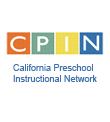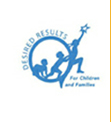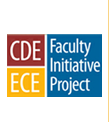Home | Assessing Dual Language Learners | Instructionally Embedded Assessment
Instructionally Embedded Assessment
Instructionally embedded assessment is based on the following guidelines:
- Assessment is developmentally and culturally appropriate.
- To ensure authentic assessment of oral language proficiency, the child’s linguistic background must be considered.
- Children should be able to demonstrate what they know and can do in a variety of ways.
- Parents, families, children, teachers and staff must collaborate to provide a full picture of the contexts and resources for learning. (McLaughlin, et al, 1995, as cited in Tabors, 2008).
Tied to program goals, embedded assessment impacts instructional practices. The teacher continually observes what children are able and are not able to do across time and contexts. Based on the teacher's observations, he/she adjusts instruction to meet the individual needs of each dual language learner (McLaughlin, et al, 1995,as cited in Tabors, 2008).
To implement instructionally embedded assessment, teachers follow the six-step process below:
- Plan what, when, and how to assess each child.
- Collect information from a number of sources, such as observations, classroom products, and conversations with families.
- Assemble a portfolio that may include observations, prompted responses, and notes about conversations. Portfolio items should include information about both of the child’s languages.
- Review portfolio items on a regular basis and write summaries that can be used in sharing information about the child’s development.
- Present summaries and information from the portfolio to families and staff to guide instructional planning.
- Utilize the information to guide curriculum development. (Tabors, 2008).
Patton Tabors (2008) recommends the use of the Observing Children Learning English (OCLE) to track the English language development of dual language learners over time. This checklist can be found in One Child, Two Languages: A Guide for Early Childhood Educators of Children Learning English as a Second Language (Tabors, 2008).
Read more about:




